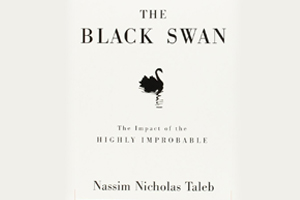Author: Carl Richards
It is said that a goal without a plan is simply a dream, one that you might or might not achieve. In life, it is important to have a plan – something that guides you through the peaks and troughs of life and inculcates discipline. A great financial plan not only tells you how to save and invest but digs deeper into “why you need to save and invest”. Carl Richard’s “The One-Page Financial Plan” does just that. It will help you identify what you truly want and then guide you to make a financial plan to achieve the same.
Key Takeaways
- Look broader and expand your perspective – do not just think about your immediate income and expenses. In order to have a robust long-term plan, it is important to have a larger vision
- In order to achieve your goals, it is important to have a plan that aligns with your values
- Understand why money is important to you – knowing the “why” is integral to creating an optimal financial plan
- Don’t deceive yourself with unrealistic predictions – honestly assess your current situation and be true to yourself when you are not able to adhere to your financial plan
- Identify your short-term and long-term goals and list them in order of priority – some goals are more important than others – your financial plan should reflect this
- Identify the mini goals – things you need to achieve in order to meet the big goals
- Evaluate your financial position by creating your own balance sheet – divide your finances into liabilities (things that you owe) and assets (things that you own)
- Budgeting is an important exercise – track what you spend and try to cut down on unnecessary or discretionary expenses
- Instead of saving only a certain percentage of your income, try saving as much as you can
- Pay off your debts – there is no point in paying interest
- Adopt a scientific approach to investing – do your research and be informed about your investment
- Diversify – it is important to create a diversified portfolio that is spread across stocks
- Be Flexible – understand that nothing is etched in stone. Make sure your financial plan is agile enough to adapt to changing personal circumstances and diverse investment environments
Discover Why Money is Important for you
It is often said that money cannot buy you happiness. This indeed might be true. However, money is essential for survival. It also plays an integral role in helping you reach your goals and aspirations. Thus, even before you can embark on your financial journey or chalk out a financial plan, you must ask yourself the question, “Why is money really important for me?” Write your answer down on a piece of paper. Asking why money is important to you helps you identify your key values which in turn will determine your idiosyncratic needs and subsequently form the very basis of your financial plan. Every financial plan is unique and should ideally reflect an individual’s unique goals and requirements. Many planners make the folly of immediately starting with goals and then just jumping to budgeting and investments. However, one can find a good solution only when one goes to the root cause of the problem. In this case, one can draw up an optimal financial plan only when one understands the basic and important values of an individual. For example: think about the last time you visited your doctor. Before prescribing you medication he discussed your current situation, the symptoms that were ailing you and your unique medical needs. It is only after this discussion did he prescribe a treatment. The bottom line is that a doctor does not give every patient the same medication and instead prescribes a custom treatment for each patient.
The fundamental principle behind a good financial plan is the same. Knowing why you value money will aid in the examination of your financial situation. Only then can you develop a “treatment” that will work for you. There might be a person who wants to save money to travel the world. On the other hand, there might be a person who wants to create a good retirement corpus. Due to the difference in values and key goals, the financial plan of these two individuals would look markedly different. Knowing your values and the attached goals will also help you assess whether the way you spend your time reflects your values.
Imagine that you value money because it gives you the financial freedom to spend more time with your family. Now imagine that you run an independent business and spend all weekend on Twitter trying to increase your followers to grow your personal brand. You spend so much time on Twitter that you interrupt dinnertime conversations with your family to reply to tweets and check your followers. Are you really living according to your values?
Once you have identified your values, the next step is for you to formulate goals to guide your financial future.
Clearly identify and write down each of your goals
Before you set out to writing down your goals, understand that life can be unpredictable and only those who are agile enough to adapt can survive. Rewind twenty years when phone bills were one of our biggest monthly expenses. At that time, no one could have predicted the advent of free apps like Skype or WhatsApp or even the drastic drop in call prices which would cause your phone bills to plummet. The bottom line is that the future is unpredictable. Thus the financial plan that you create and the goals that you chalk out should be flexible and agile enough to cope with this unpredictability.
The first step in developing your goals is accepting that it’s not always possible to predict the future. Financial planning is like planning your vacation. You set some goals, decided the place you want to visit and then chalk out an itinerary that would make your vacation an enjoyable one. However, you also make room for unpredictability. For example, if the weather is stormy you might not be able to enjoy a bike ride or a picnic you planned. Instead, you can go to a museum and still have a great time.
It is the same with financial planning. Your goals aren’t set in stone, so be willing to alter them if circumstance change. Let us assume that one of your short-term goals is to pay off your student loan in the next three years. However, suddenly there is a financial crisis because of which you lose your job and no longer have a steady flow of income. In such a scenario it would be impossible to stick to your original goal. So the next best thing that you could do is to alter your original goal and instead readjust and settle on paying off only a portion of your student loan. This way you are still able to keep your commitment, just not in the shape that you have initially envisaged.
Once you have accepted that the future is unpredictable, it is time for you to start writing down some goals. But what should your goals be? Again the answer to this is tethered to the original question,“Why is money important to you?”
Assume that your answer to the above question was, “Money is important to me because it will help me give my kids the best opportunities and keep them safe.”
Then some of your goals could be along the following lines:
- My son is going to college in three years and I need to save enough money to finance the same
- My daughter is planning to go on a foreign exchange trip next year for which I need to save money
- I want to set up some emergency funds in case my kids don’t find a job right out of college
No matter what your goals are, remember: you can always adapt them as your situation changes.
You don’t need to be an accountant to make a simple balance sheet: Assess your current financial situation by making a simple balance sheet
Your values and goals are the bedrock of your financial plan and will guide you in all financial situations. However, once you have determined these you need to assess your current financial situation in order to determine what actions need to be taken and how they need to be taken.
This process involves creating your personal balance sheet that clearly highlights your current assets and liabilities. Having a clear understanding of your assets and liabilities will help you take the necessary steps to reach your goals. But imagine that you don’t know – or don’t want to know – your exact financial situation. Without this information, how can you possibly know what you need to do to get where you want to be?
Draw a T shape on a piece of paper, marking the left side as assets and the right side as liabilities. Now, under assets put everything that does or has the potential to generate income. For example, your investments, savings and property will fall on the left side under assets. Now, under liabilities put everything that you owe. This could include your mortgage and debt. Next, simply subtract your liabilities from your assets to figure out your net worth. Write that above the T. This is an important number as it tells you your current networth. Once you have your balance sheet ready you will have a much better understanding of where you stand and what your next steps should be. In addition to helping you determine the next steps in your financial plan, understanding your financial situation can also relieve you from financial anxiety and make it possible to take action. Many people are constantly worried that they do not have enough money to meet their financial goals. On the other hand, there are others who believe that they have more than enough money to continue living a life of comfort. Both of these people might be wrong because they have infact, no idea about their networth. Not knowing your current financial situation is detrimental to your future financial security. Which is why, it is imperative to draw your balance sheet and have a clear idea of your current networth.
Once you have a clear picture of your current financial situation, the next step would be to understand how to save money efficiently in order to free up resources to invest intelligently and achieve your goals.
Track what you spend by using budgeting
The concept of budgeting stems from our basic requirement for money. Budgeting essentially entails taking a good look at all your expenses and then making adjustments to the way you spend your money in order to achieve your financial goals. To budget well, it’s crucial that you understand where you are spending your money, is it on essentials or luxury items and whether your overall spending is in line with your financial goals and your values. Many of us consider budgeting and tracking expenses as a tedious and boring exercise and believe that only those who lack financial discipline need to draw up a budget. In reality, financial success is only really possible if you budget well, tracking how you spend your money, measuring that against your goals and values and adjusting accordingly.
For instance, if one of your goals is to travel more but you spend 30 percent of your income on partying and fine dining, financing a foreign trip is going to be challenging. However, all hope is not lost. All you need to do is to budget and save enough money to finance your trip. First, determine your monthly income. Then, make a list of all your fixed monthly expenses, as well as, your discretionary monthly expense. Try to cut down some of your fixed monthly expenses while committing to definitely cut down on some of your discretionary expenses. Try to make a conscious effort to spend less money. Instead of eating out for lunch, pack sandwiches. Instead of going to the movies, take a walk through your neighbourhood and discover places you’ve never paid attention to before. Another challenge you could try is to make as few transactions as possible in a week. Once every two months, take stock of your expenses and evaluate your success.
Save as much as you can and view paying off debts as a form of investment
Contrary to popular wisdom, rules of thumb like saving such-and-such a percentage of your income each month are not all that useful in achieving your financial goals. In the same way that your financial plan is personal, your savings plan should be too. The goal should be to save as much as you possibly can – an amount that will depend on your unique situation. Your financial plan and your savings/investment schedule should be customized to your unique needs. Once you have determined how much you can save, you can make life a lot simpler by automating the process. Small amounts of fixed money that you save regularly can grow into a small fortune over the long-term.
In addition to saving, you should be paying off your debts, starting with the one with the highest interest rate. Paying off debts is essentially an investment in your financial future. If you’re racking up debt on your credit card for things that don’t align with your goals, then you’re ensuring that you will be busy paying interest on your debts down the line rather than saving for what you actually want to do. In essence, you’re saying “no” to the goals you set and “yes” to something else. If this “something else” is really important, you might want to revise your goals.
Take the plunge – Invest and create a diversified portfolio
In today’s investment landscape, an investor is really spoilt for choice. There are innumerable businesses, initiatives and institutions that promise a compelling return on investment. However, you need to choose the one that is best for you and can help you achieve your financial goals. How should you make this choice? Should you follow the advice of your friends, family or authoritative-sounding finance people on television?
You could, but then you’d be speculating and not really investing, i.e., making investment decisions with your gut rather than your head. To make the best investments, you need to look at investment as a science. A good way to avoid financial mistakes and risk is by consulting academic journals and other peer-reviewed publications about investing. People have been trying to make their money grow for a long time, and experts have been studying investment for years. Predicting how a stock will perform in the future is a complex business, certainly not one that intuition alone will help you decipher.
In addition to treating investment like a science, it’s important to mitigate risk by diversifying your portfolio or spreading it over many different types of stocks. No single stock is going to be your golden ticket to wealth, and if such a stock exists, you can’t count on finding it. How many of us could have predicted that Facebook would become this big when it first went public? How many of us could have predicted the financial crisis of 2008? Instead of trying to find that one stock that could bankroll all your goals, you should instead spread the risk of your portfolio by investing in multiple sectors and across market capitalizations. This would ensure that while some stocks will lose value, others might appreciate. Consequently, you will end up holding a balanced portfolio.
There are many ways to create a financial plan. However, the best plans are those that are simple, clearly articulate your current networth and future needs and are tethered to your core values.
An investor education initiative
All Mutual Fund Investors have to go through a onetime KYC process. Investor should deal only with Registered Mutual Fund (RMF). For more info on KYC, RMF and procedure to lodge/redress any complaints – please visit onhttps://www.edelweissmf.com/kyc-norms
MUTUAL FUND INVESTMENTS ARE SUBJECT TO MARKET RISKS, READ ALL SCHEME RELATED DOCUMENTS CAREFULLY.
Trending Books
MUTUAL FUND INVESTMENTS ARE SUBJECT TO MARKET RISKS, READ ALL SCHEME RELATED DOCUMENTS CAREFULLY.



















